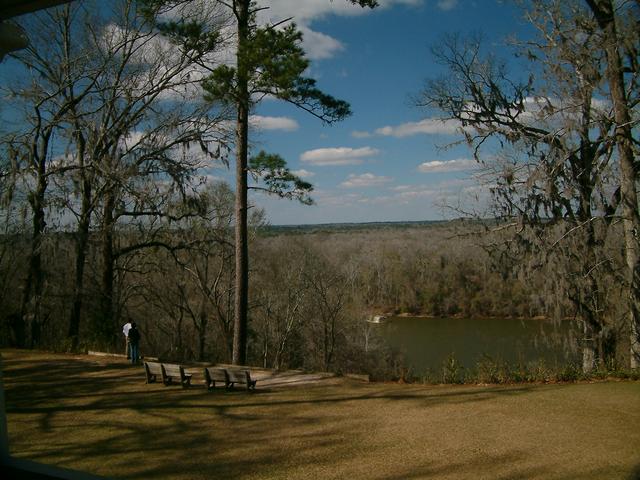This view of the Apalachicola River and floodplain is from the second story balcony and looks towards Ocheesee Landing to the Northwest.
The commanding bluffs in the park were of strategic importance during the Civil War because of the view they provided of the Apalachicola River. The Confederates emplaced six heavy guns here to stop any attempt by the Union Navy to force its way up the river to the Confederate naval installations in Columbus, Georgia. The battery was never attacked.
During the first Seminole Indian War in 1818, General Andrew Jackson crossed the river here with his army. In 1828, when Florida became a U.S. Territory, the first government road across north Florida met the river here in the park. Throughout the 1800s, the Apalachicola River was an important interstate highway. More than 200 steamboats traveled the river during the great trading era, 1840-1910.
During the Civil War, this important route was protected by a six cannon battery. Located on a bluff, the battery was in place to prevent Union gun boats from passing. The remains of the gun pit can be seen along the bluff trail. The Gregory House, built in 1849 by Planter Jason Gregory, stood across the river from the park at Ocheesee Landing.
Gregory's plantation prospered until the beginning of the Civil War and the abolition of slavery. In 1935, the house was dismantled and moved to its present location in the park by the Civilian Conservation Corps, which was developing the park. A number of Native American sites have been discovered on the park by archaeologists.
Source: Florida CCC Heritage State Parks
